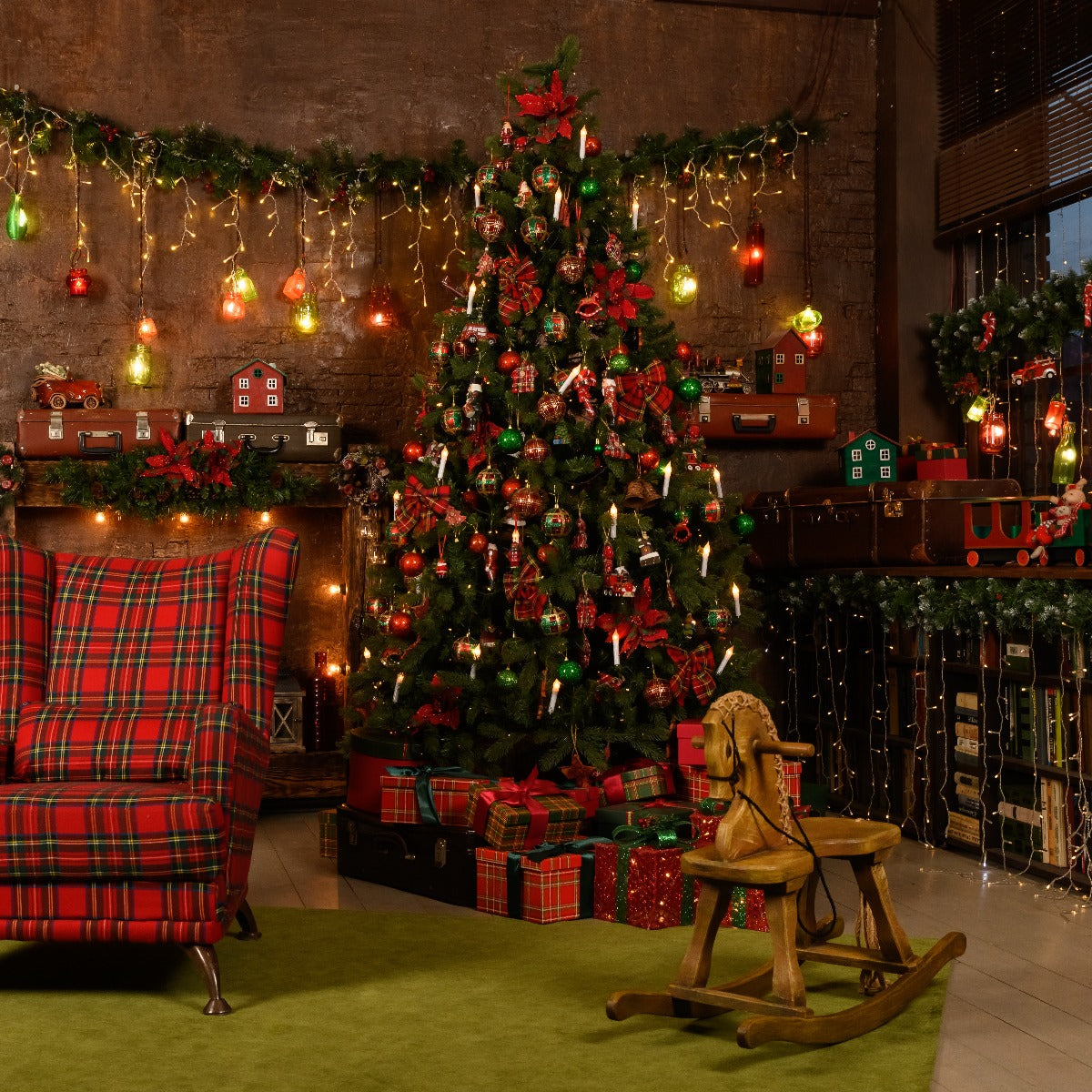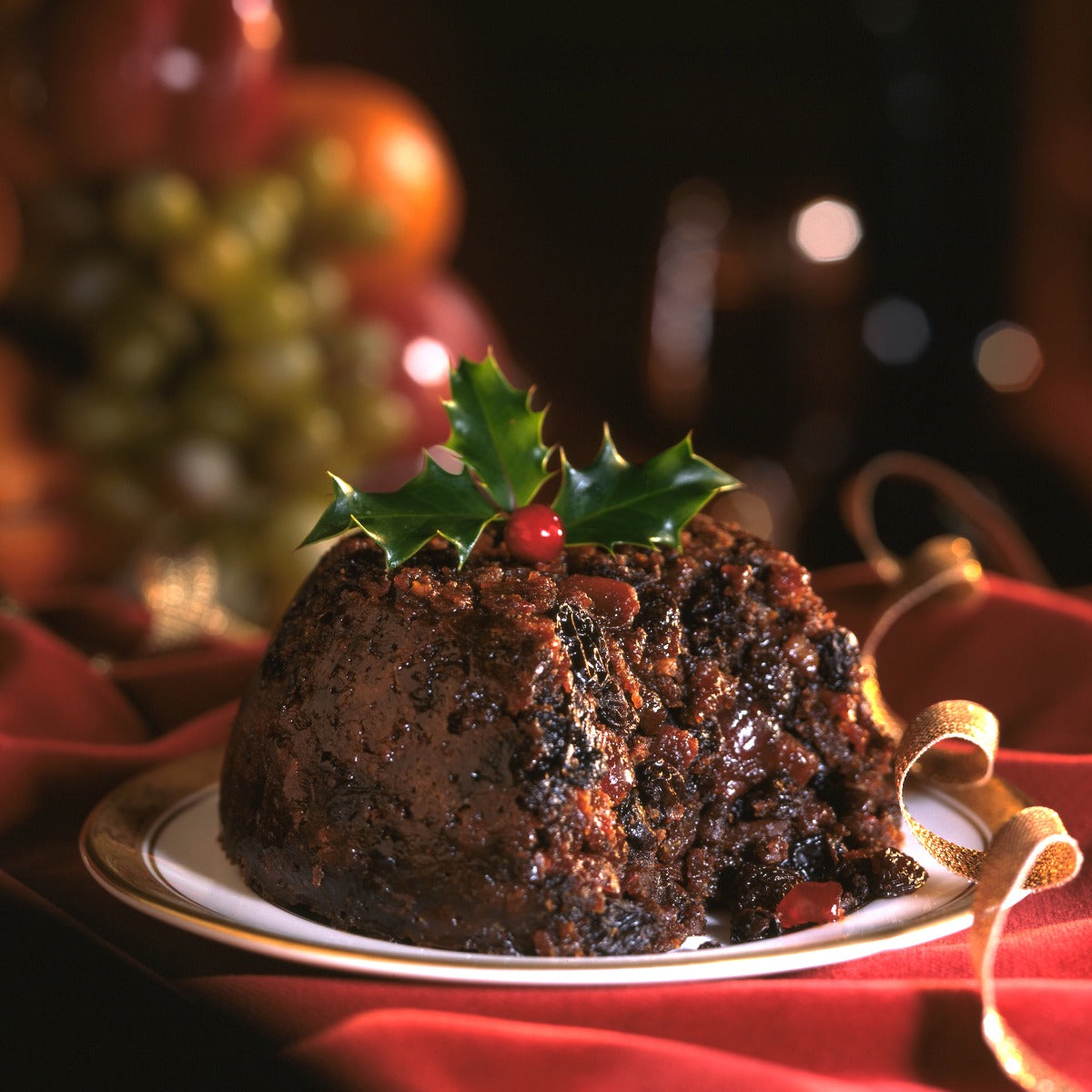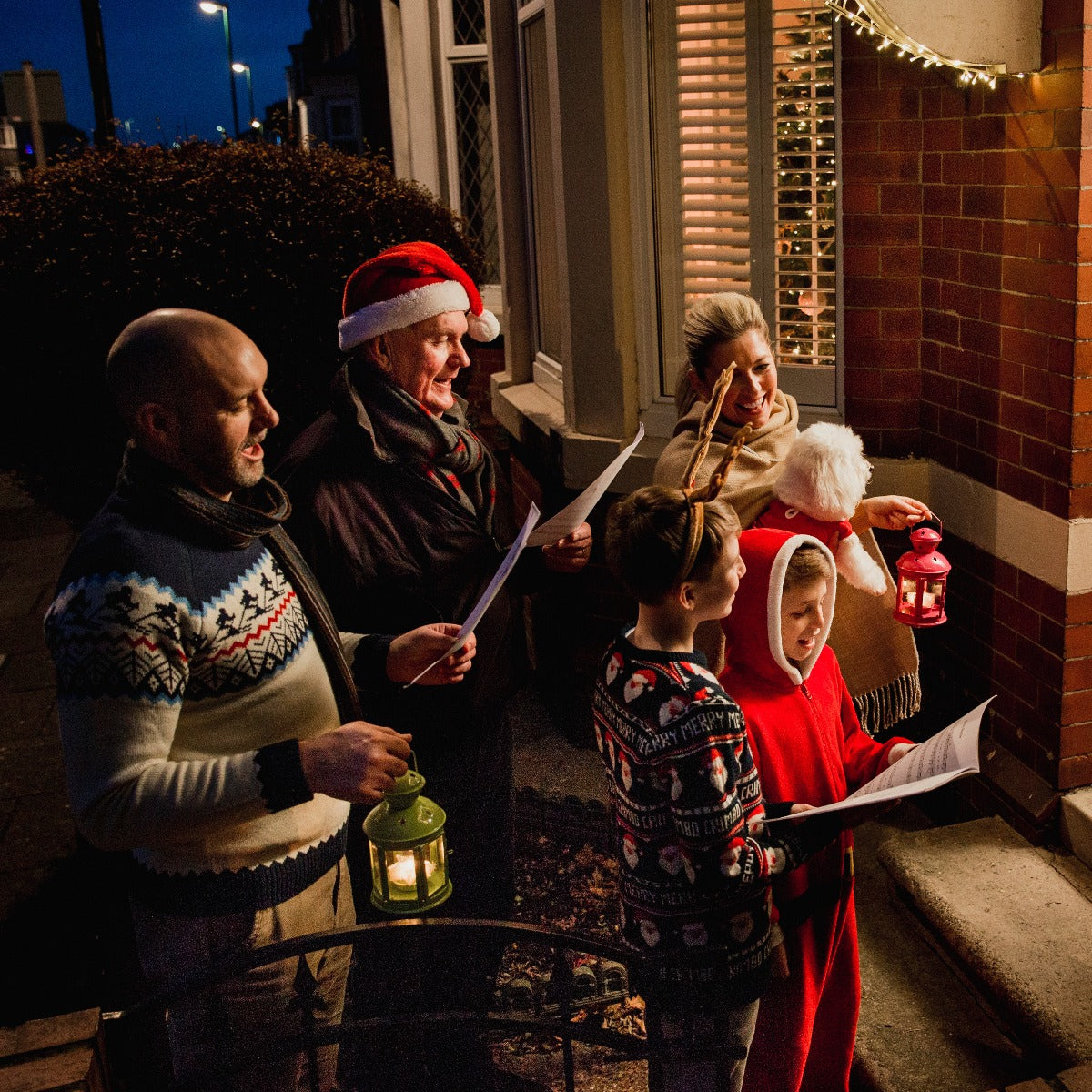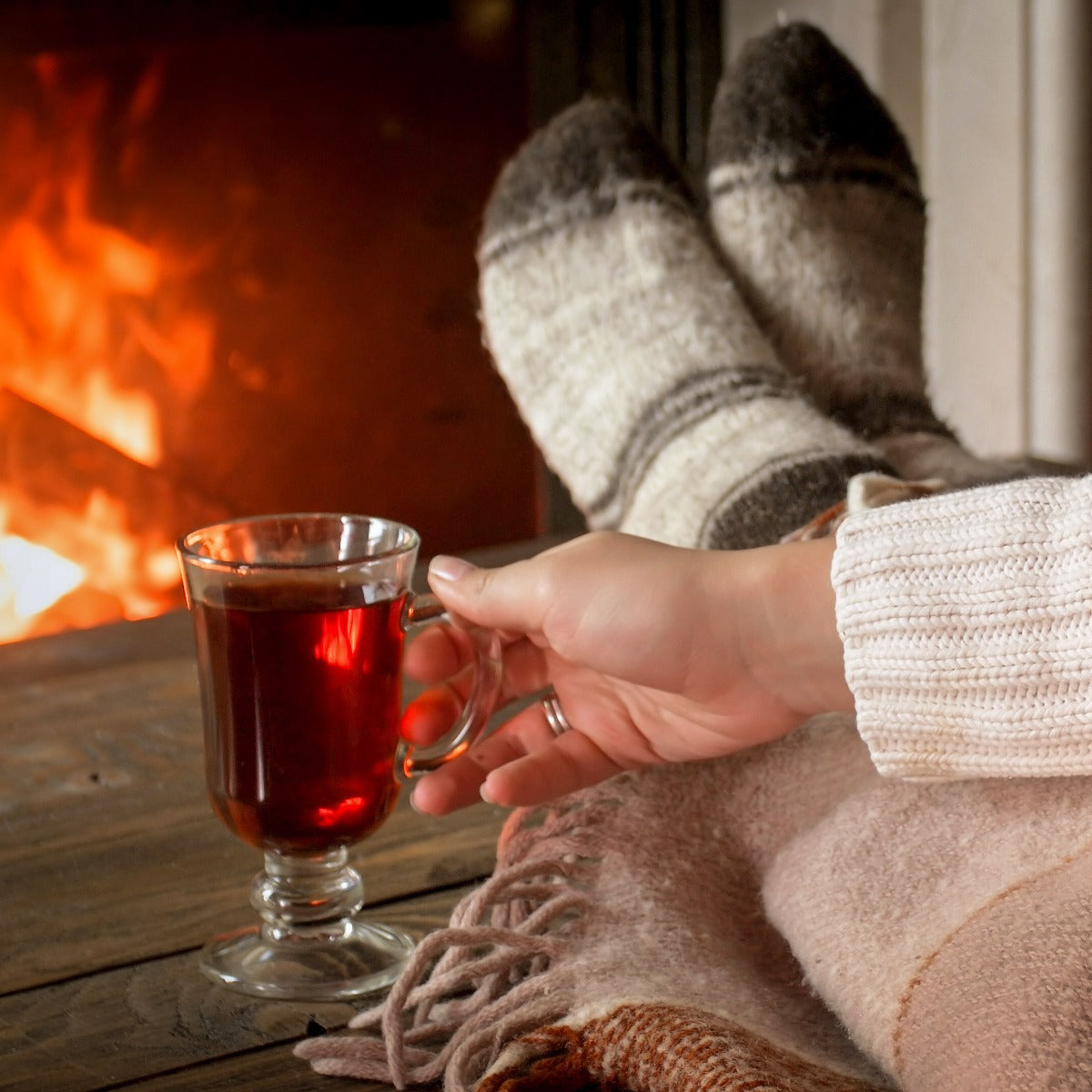Curious Christmas Traditions
It's that time of the year! The decorations are up, presents are wrapped, and we're ready to settle down with a warm drink to enjoy the festive season. But do you really know all there is to know about this time of year or how it's celebrated up and down the country? You might surprised!
We're taking a look at some of the curious Christmastime customs from our past and present, and discovering how some of our most loved traditions came to be.
The tree
Whether it's real or artificial, decorated with tinsel or lights, candies or presents, baubles or homemade ornaments, one thing is common in most households each December - the Christmas Tree. Every year, 85% of adults in the UK set their tree up for the festive season. But we've been doing this for less than 200 years! Like many of our modern Christmas traditions, we've got the Victorians to thank.
The first Christmas Tree was actually brought to the UK by Queen Charlotte, who set it up in the Queen's Lodge at Windsor in 1800. While it became a popular custom with the upper classes, it wasn't until the 1840s, when periodicals described the Christmas decorations in the royal palaces, including lavish trees imported by Prince Albert, that it became common across the country in all classes.
The greenery
There are a few decorations we still don that go back a lot further. Decorating with evergreens, like holly, ivy and mistletoe, has been a tradition for centuries - there are records of all three being used in households since at least the 16th century.
In Cornwall, this was displayed as a bush, or bunch - a 3D spherical wreath used in pagan rituals for the winter solstice. The bush was decorated with apples and red candles, with the candles being lit just before midnight on 20th December.
A similar decoration, known as the Kissing Bush or Kissing Bough, was used across the country for Christmas festivities during Tudor and Georgian periods. This might even be where the tradition of kissing under mistletoe came from!
The fire
Then, there's the yule log. No, not the tasty chocolate treat - the actual log. A pagan tradition, which was then adopted by Christianity, saw households gather the biggest log they could find for their hearth. Once chosen, the log would be brought into the household, often decorated with evergreens and ribbons, on 24th December. The hope was to gather a log big enough to burn through until the 5th of January.
While this was a widespread custom, the traditions around it varied across the country. In Norfolk, both masters and servants would drink the good cider for as long as the log was burning. In Scotland, a female figure, known as the Oldwife, would be chalked onto the Yule Log (Cailleach Nollich) before burning, while a male figure was drawn in a similar way in Cornwall. In Stromness on Orkney, they would have a tug of war between the Southenders and Northenders over the biggest log - an event that didn't stop until 1936!
The snow
But what about our dreams of a white Christmas, with snow decorating everything in sight? While, technically, we've had snowfall on Christmas Day in 39 of the last 53 years, most of the time, this has been localised or hasn't stuck. In fact, only four Christmas Days since 1960 have seen widespread snow coverage.
Our expectation might have something to do with Charles Dickens, who was a big Christmas fan and also grew up during the 'Little Ice Age', which saw the coldest temperatures in over a century. His first eight childhood Christmases were snowy, which he included in the five tales of Christmas he went on to write about. While chances of snow this year are slim, one thing is certain - Jack Frost has arrived and is going nowhere fast, so we might at least have a silver-tinted Christmas, if not the full blanket of snow!
The food
The main course
Many of us will be sitting down to a plate of turkey and pigs in blankets or nut roast and meat-free alternatives (with all the trimming, of course) this year. Those with turkey on their plates will be following in the footsteps of King Henry VIII, who is credited as the first monarch to include turkey in his festive feasts, alongside other birds, including geese, peacocks and swans!
For the masses, a goose was the meat of choice. In Victorian times, working-class men would join a Goose Club organised by a pub landlord. Every payday, they'd take their wages to the pub and pay towards their Christmas goose in instalments. They couldn't guarantee a plump bird for everyone, so when it came to handing out the geese, all names were put into a hat and drawn at random. That way, no one could complain that they received a scrawnier bird than the person next to them. Some even relied on the local bakers to cook their goose for them, as often poorer homes didn't have ovens big enough (if they had one at all).
So, when did we switch back to turkey? Well, once again, that's down to Charles Dickens. He popularised turkey after including it in A Christmas Carol. Turkeys were mostly raised in East Anglia, so to make it to London in time for Christmas markets, farmers would begin a 'turkey drive' as early as August to walk up to 1000 birds the 100+ miles to the city!
The pudding
Yet another tasty treat given to us by the Victorians was the Christmas Pudding. Although it had origins in medieval times, a Twelfth Cake was the delicacy of choice before. This was eaten on the last evening of Christmas celebrations and would have a dried pea hidden in one side and a dried bean in the other. Whether noble or servant, the man who found the bean would be the King or Lord of Misrule for the night and the woman who found the pea would be the Queen or Lady of Misrule.
When the Twelfth Cake was replaced by the Christmas (or Plum) Pudding, the custom of hiding things inside wasn't entirely lost. Coins and other tokens were traditionally mixed into the batter, which was supposed to be made on or just after the Sunday before advent - now known as Stir-up Sunday - and mixed clockwise, with each member of the household giving it a stir while making a wish.
Then, of course, there are the mince pies. You'll need to get your cupboards stocked up - if you want to ensure good health and happiness in the new year, you must eat a mince pie every day between Christmas Eve and January 5th! Traditionally, the pies were made on Stir-up Sunday, too, with the same customs as Christmas Puddings. But long before they were a sweet treat to leave out for Santa, they were a savoury dish (a favourite of both King Henry V and VII), filled with finely minced meat, usually mutton, chopped up fruit and preserving liquid - ideal for keeping you full in the winter months.
The festivities
Feasts and fasts
We have the Romans to thank for a lot of our Christmas festivities, including having them in December. Their Saturnalia festival featured banqueting, partying, gift giving and general merriment, where people were given gag gifts - like often happens in modern-day Secret Santa. It's believed the early Christians chose this time of year for their celebrations to match up with Saturnalia and other pagan winter festivities.
Modern advent celebrations are a pretty modern concept. For centuries, advent was a time for fasting, while the twelve days of Christmas (25th/26th December to 5th/6th January) - also known as yuletide, or 'The Daft Days' in Scotland - was the time for feasting and merriment.
In fact, holy day festivals, like Christmas, became so wild that they actually got banned in the 17th century during the Reformation. The Puritan government felt that every Sunday should be classed as a holy day, and that unnecessary and frivolous festivals should be spent in respectful contemplation. They even had soldiers keeping an eye on anyone preparing food for Christmas feasts or holding special church ceremonies and would fine you if you were caught!
This all sounds very community-based, doesn't it? Not quite the family-orientated Christmas we're used to in the 21st century. Three guesses for who's responsible for that shift... Yes, that's right - Charles Dickens. Well, we can't give him all the credit, but his nostalgic view of his childhood Christmases that made its way into A Christmas Carol and his other Christmas tales helped take Christmas from a time of raucous feasting to a time for giving, reflecting, and gathering with family and friends.
Music and theatre
You've probably heard of midnight mass, where Christian (mainly Catholic) church services take place late on Christmas Eve, either beginning or ending at midnight when Christmas Day begins. But have you heard of 3am carols?! Plygain, one of the oldest Welsh Christmas traditions, would see men gather in a church for a carol service between 3am and 6am before heading home to their families with the rising sun. The first record of this custom is from the 13th century, and it continued up until the 19th century. Even now, there are still places in Wales where you can attend a Plygain service if you're up early (or late) enough.
This isn't the most curious Welsh carolling tradition, though. Wassailing was a tradition across the country and overseas that saw members of the community go singing door to door, offering a mulled drink (often cider) from the wassail bowl in exchange for gifts. Traditionally this was done on Twelfth Night, although dates varied from place to place, and the custom still exists in some places in the UK.
However, some communities in Wales, and some in England too, do it a little differently - they're accompanied by the Mari Lwyd. This is a hobby horse made with the skull of a horse attached to a pole and carried by someone hidden under a white cloth. You'll want to search for pics of this one! The Mari Lwyd will turn up at your door and challenge you to a battle of wits, starting by singing about wanting to be let in. The homeowner (with the door shut) will then have to retaliate in rhyme, going back and forth until one fails to produce a rhyme or gives up. If the homeowner wins, the Mari Lwyd will leave, but if the spectral horse wins the battle, it will be let in and allowed to take anything from the kitchen cupboards that it wants! This tradition is still kept alive in some parts of Wales, so make sure you flex your rhyming muscles before the festivities begin.
This might seem a bit much, but actually, carols were traditionally pretty intense, with strangers knocking on your door and singing until you gave them food or gifts to make them go away. Just think of the line of the song We Wish You a Merry Christmas that demands figgy pudding and states, "We won't go until we get some". Another door-to-door tradition during yuletide was mummering (also known as mumming or guising), which would see groups of friends or family dressing in disguise and visiting houses in the community. If they were let in, they'd put on performances - often a folk-based drama, but sometimes dances or recitations. The challenge for the host was to guess the identity of their guests, at which point they'd offer them food or drink. Folk-based mummers plays are still held in some communities during winter but tend to be in a set location rather than a door-to-door experience.
Ringing in the new year
Nowadays, New Year's Eve sees us staying up until midnight for fireworks, a celebration and a round of Auld Lang Syne. It's quite fitting that our go-to song for bringing everyone together comes from the national poet of Scotland, Robert 'Rabbie' Burns, since the Scottish have some fantastic customs for ringing in the new year. Hogmanay, which begins on 31st December with further celebrations on 1st and sometimes 2nd January, is a tradition that may even go back far as the Vikings.
The customs vary depending on where you are in Scotland, but the most common is the first footing, which surrounds the first person who enters the house after midnight - they're supposed to be the bringer of good luck for the year and carry symbolic gifts across the threshold with them. Traditionally, the type of person to bring the best luck would be a tall, dark-haired man, while a woman or red-haired man would be unlucky. The first footer and any other guests would then be offered food and drinks to celebrate.
Fire often appears on Hogmanay in some form. Stonehaven has a fireball-swinging custom, while local men in Falkland would march in torchlight to the top of the Lomond Hills. Some places choose bonfires; others have been known to burn Viking longships! The small village of Burghead takes part in an ancient pagan ceremony on 11th January - the original New Year's Day before the introduction of the Gregorian Calendar. This custom - the Burning of the Clavie - features a wooden barrel filled with tar and staves, that's set ablaze. The Clavie Crew - consisting only of Burghead natives - mount the barrel on a pole and march it through the streets to an ancient altar, where the clavie is allowed to burn into ash. Many onlookers will attempt to gather live coals from the clavie to light their first fire of the year.
New traditions
We may be moving further away from the Christmas traditions that were a staple in the lives of our ancestors, but that doesn't mean we've lost sight of traditions altogether. Many households and families hang on to the customs they feel nostalgic about and have begun to create their own traditions to make the holiday the best it can be.
This tradition could be a family gathering on Christmas Eve, with a buffet and games or a frosty dog walk to gather some last-minute evergreen decorations. Maybe it's for the running of the day itself - when to open presents, when to stop for dinner, how to decide who's doing the dishes (top tip - a slice of carrot in the gravy!) or what films to watch.
For some, it may be more of a community affair throughout advent, from festive fetes and pub quizzes to sea dips, boat races and sports matches. For others, it's more about ringing in the new year and setting intentions or resolutions, with a brisk walk to blow away the cobwebs of the previous year or time to reflect on the holiday and write thank you letters for gifts.
While it's interesting to look back at the curious traditions that have paved the way to modern Christmas, it's important to remember that this time of year is all about what you make of it.
So, whether you say Merry Christmas, Nollaig Chridheil, A Cantie Yule, Nollaig Shona, Blythe Yuletide, Nadolig Llawen, or any other festive greeting, everyone here at TTHQ in (a rather chilly) Cornwall wishes you Nadelik Lowen - we hope to have many more adventures together in 2023.
Say hello to your next Christmas tradition
With a Treasure Trail, you can take the tradition of a festive walk and kick it up a notch with a whole heap of adventure. Bring the whole family together as you set off exploring for some quality time working together to solve the clues and unearth fascinating facts. Plus, at roughly two hours long, you'll still have plenty of time to snuggle under blankets, watch festive films and eat mince pies!
If you set off on a festive adventure this year, make sure you submit your answer on Christmas Day, Boxing Day or New Year's Day to unlock the relevant club badge in your account! Any answer - right or wrong - submitted through the website at any time on the 25th and 26th of December or the 1st of January will count.
If you don't have one waiting under the tree, you can get instant access to a Trail adventure with a PDF download to print at home.
You can find out more about our Trail Blazer Badges and Footsteps Rewards here.
Treat your inbox
Receive our newsletter on the latest offers and happenings.
You can unsubscribe any time you want.






